Rhino sightings offer some of the most magical and thrilling wildlife encounters available, but getting up close to these animals on safari is not a given. If you wish to see either black or white rhino in the wild in Africa, you need to know where to look. However, thanks to intensive conservation efforts in certain areas, as long as you visit the right place, they can be seen relatively easily.
Kenya and South Africa are the two most obvious countries to consider for a traditional big game experience with excellent chances of getting up close to rhino.
In Kenya, the Ol Pejeta, Solio, Lewa and Borana conservancies are conservation strongholds for both black and white rhino, while both Meru National Park and Lake Nakuru National Park are also home to significant rhino populations.


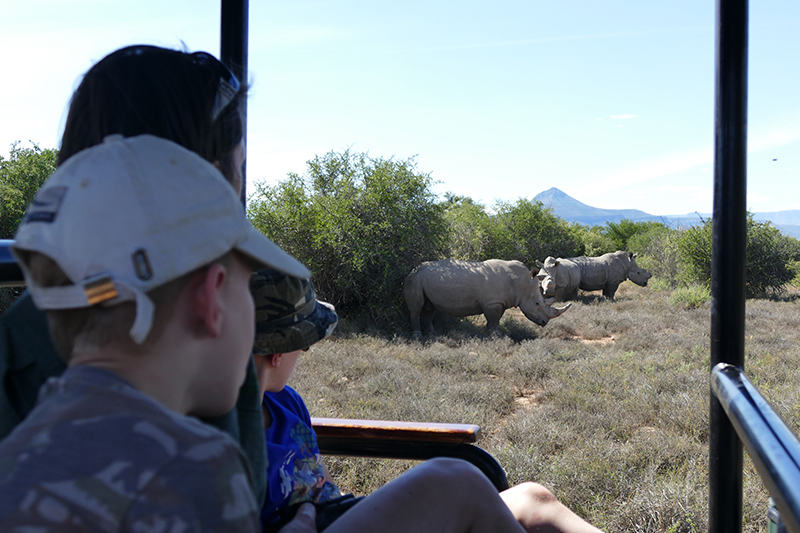
In South Africa there are many individual reserves and national parks that offer excellent rhino viewing, including the Madikwe Game Reserve, Kruger National Park and bordering private reserves, several reserves in the Waterberg region, Hluhluwe-iMfolozi National Park and a number of private reserves in KwaZulu Natal, and several big five reserves on the Eastern Cape. Although spotting a rhino can rarely be 100% guaranteed, your chances of having a great sighting in all these areas are extremely good.
Other well-documented areas for seeing black rhino include Etosha National Park in Namibia, and the Ngorongoro Crater in northern Tanzania. A further up-and-coming black rhino stronghold is Liwonde National Park in Malawi; and very limited areas in Botswana’s Okavango Delta have maintained good populations after a large trans-location project. There are also a few very specific rhino sanctuaries such as Ziwa Rhino and Wildlife Ranch in Uganda, the Ol Chorro Rhino Sanctuary in Kenya’s Masai Mara and the Khama Rhino Sanctuary in Botswana’s Kalahari Desert.
However, for more specialist or unusual rhino encounters and experiences, you may need to look beyond the well-trodden paths, and you may need to leave the safety of a vehicle and get out on foot. The magic of any wildlife encounter is often enhanced by the setting – a wild location, an incredible landscape or simply the exclusivity or unpredictability of a sighting. Tracking rhino on foot can be an exhilarating experience that gives you a completely different level of appreciation.
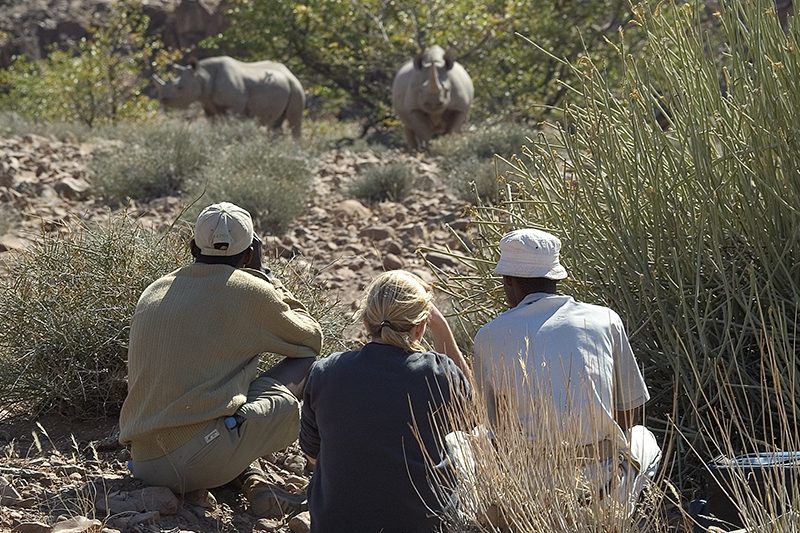
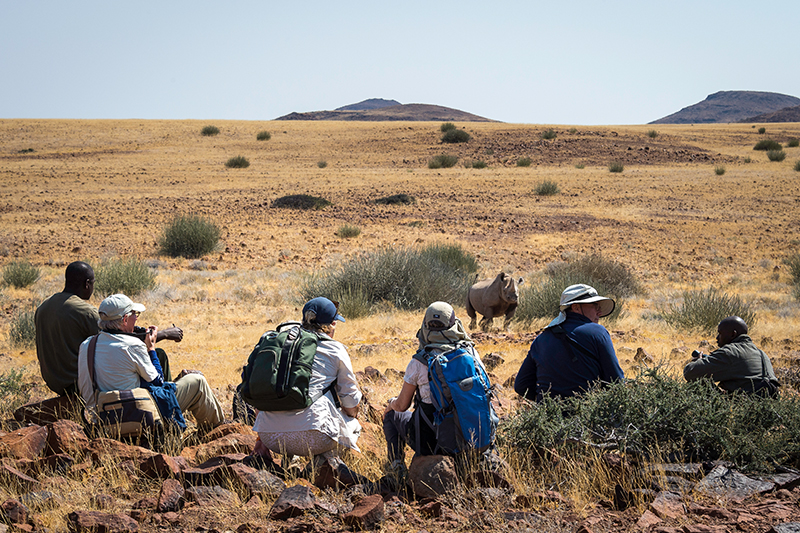
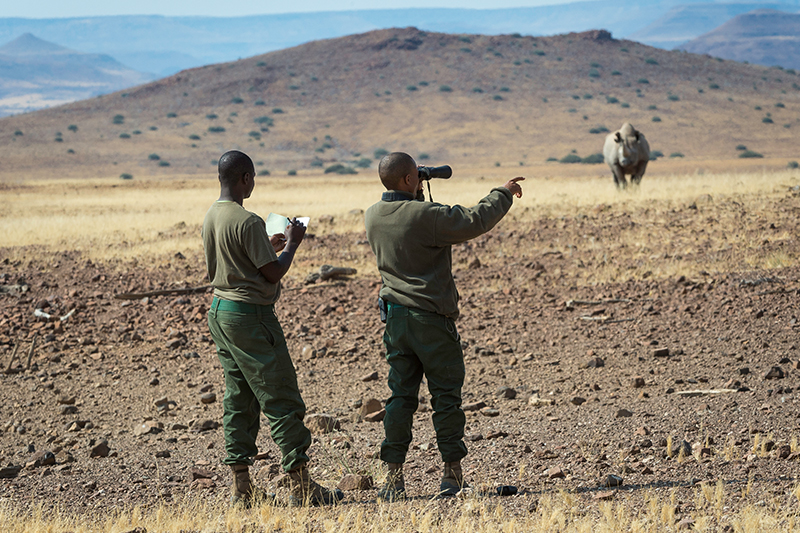
There are a variety of places across safari Africa where tracking rhino on foot is possible.
1) In the Damaraland and Kunene regions of north-west Namibia, desert-adapted black rhino thrive in an arid and rocky landscape. This is genuine desert territory, and it is hard to imagine large herbivores surviving in such a harsh environment, but the rhino has adapted to not require water daily and to survive off normally deadly plants such as Euphorbia. Remote springs and ephemeral rivers provide just enough water for their needs. While you can sometimes see desert rhino by vehicle, the difficult terrain usually means heading out on foot gives the best opportunity of getting close to these impressive animals. If you can find fresh tracks in the morning, you usually have a chance to see them when they rest up during the heat of the day. Walks are usually short, due to the harsh conditions and heat, but encountering these shy and wild creatures on foot is a very special experience. Wilderness Desert Rhino Camp has been a long-standing provider of superb encounters in this environment, while rhino tracking is also possible on a more adventurous private camping safari with Kunene Tours.
2) A similar tracking experience is possible on the Lewa Conservancy in central Kenya. Legendary Maasai walking guide Kitonga can give a masterclass in rhino tracking on his multi-day Walking Wild safari which allows you to feel part of the tracking process and feel truly immersed in the wilderness.
3) In southern Zimbabwe, Matobo Hills National Park has long been famous not just for being the resting place of Cecil John Rhodes, but also for its populations of both black and white rhino. Here is it possible to encounter both on foot, on guided walks using telemetry to track them down in the hilly landscape. Amalinda Lodge provides a lovely base, with easy access to the rhino tracking activities.
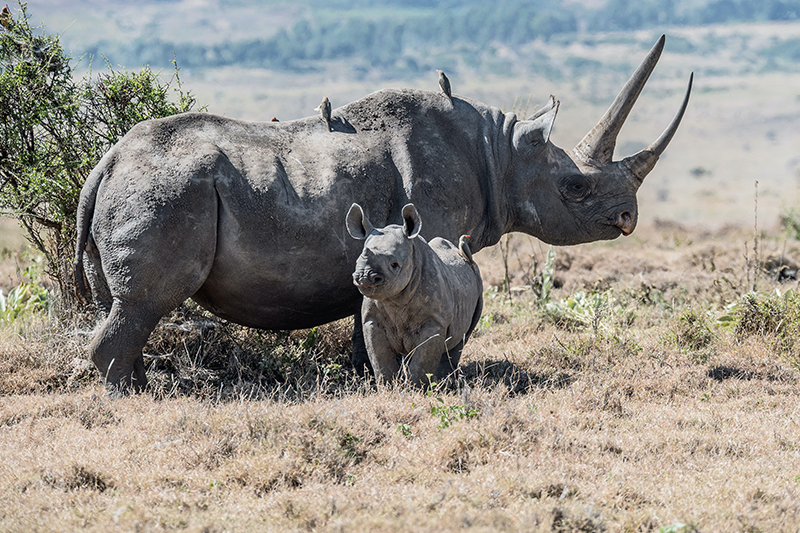
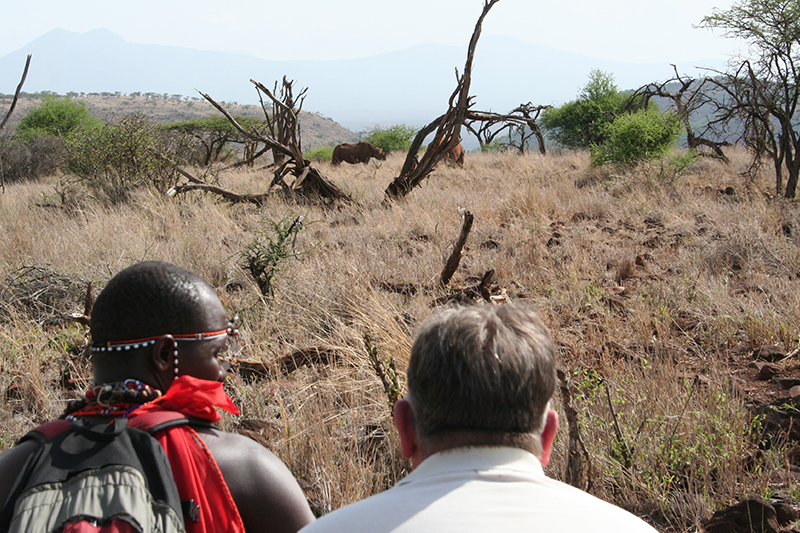
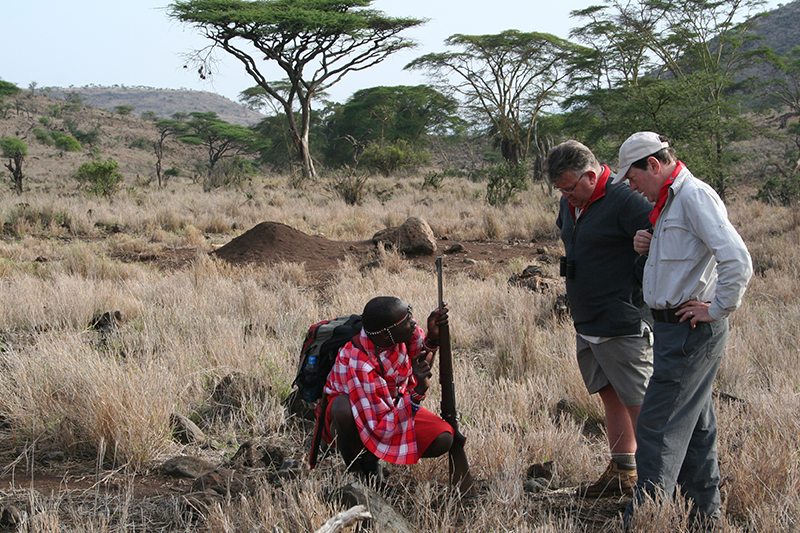
4) In the remote Kalahari wilderness of South Africa’s north-west Cape, the vast Tswalu Kalahari Reserve is home to a desert black rhino population, and enthusiasts have the flexibility to track rhino for whatever duration suits them. The vast landscape is traversed initially by vehicle, but when fresh tracks are located you can head off on foot for an unforgettable encounter. The setting is wild and the activity will vary – part of the fun is the unpredictability of the experience.
5) For a remote and adventurous walking adventure, with the chance to encounter rhino on foot, the North Luangwa National Park is pioneering rhino conservation in Zambia. Rhino numbers are still modest, so this isn’t the place to come for guaranteed sightings, but trying to find them will be an adventure, and any sightings hugely rewarding. Mwaleshi Camp specialises in walking in this remote wilderness.

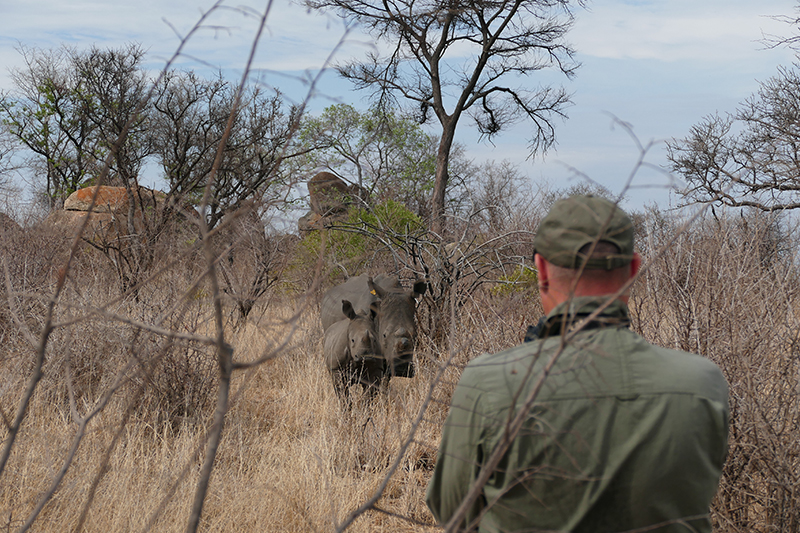
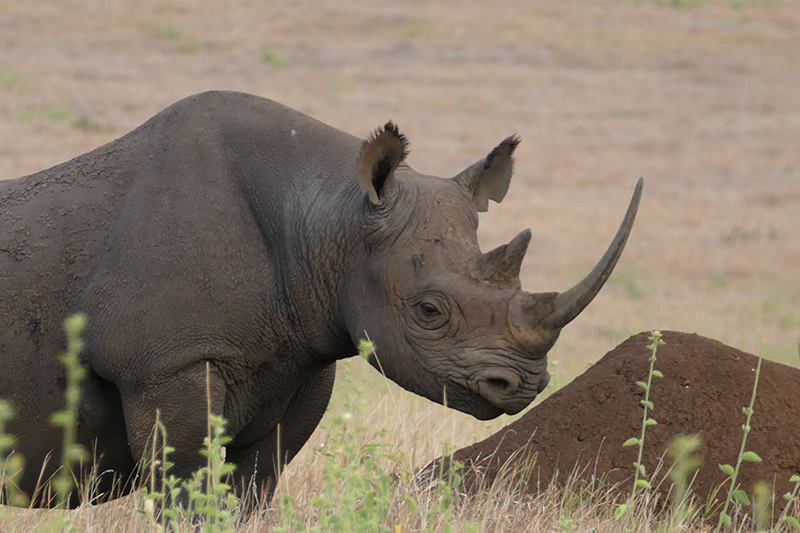
6) Across South Africa there are several opportunities to track rhino on foot. Bateleur Safari Camp in the Timbavati Game Reserve, bordering Kruger National Park, is a camp that actively encourages exploring on foot, in addition to game drives, and tracking rhino can easily become a highlight of your stay. Alternatively, for a more dedicated walking-only safari experience, Rhino Walking Safaris operate the exclusive Plains Camp, from which you can set off in the morning to track rhino and other big five species.
If you don’t fancy the ‘on foot experience’ how about getting up close and personal to rhino either on horseback or from the comfort of a viewing hide?
Total silence is required to make the most out of a couple of hides on the private Dinaka concession, bordering the Central Kalahari Game Reserve in central Botswana. If you get the timing right, you may only have to wait half an hour or so before the magic begins. Dusk is a popular time for rhino to come to a water source to drink, and you can almost sense their arrival before you see them. Like a scene from Jurassic Park the huge white rhino approach, stopping every few metres to listen and smell, twitching their ears and flaring their nostrils. Eventually they relax, quench their thirst and amble off, hopefully blissfully unaware you were watching.
A similar experience is possible in the lesser known Majete Wildlife Reserve in southern Malawi. The dense miombo woodland creates a different, more intense feel, where you may hear the subtle tell-tale signs of an approaching black rhino before they emerge in the dwindling light to drink.
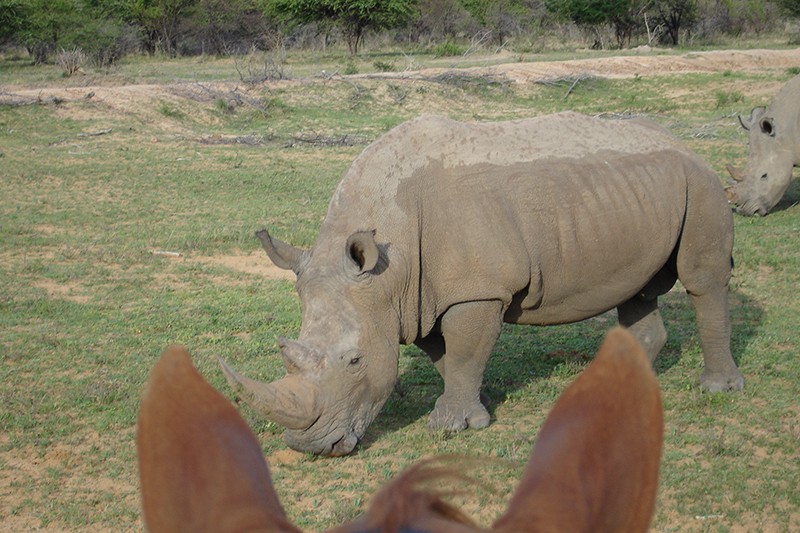
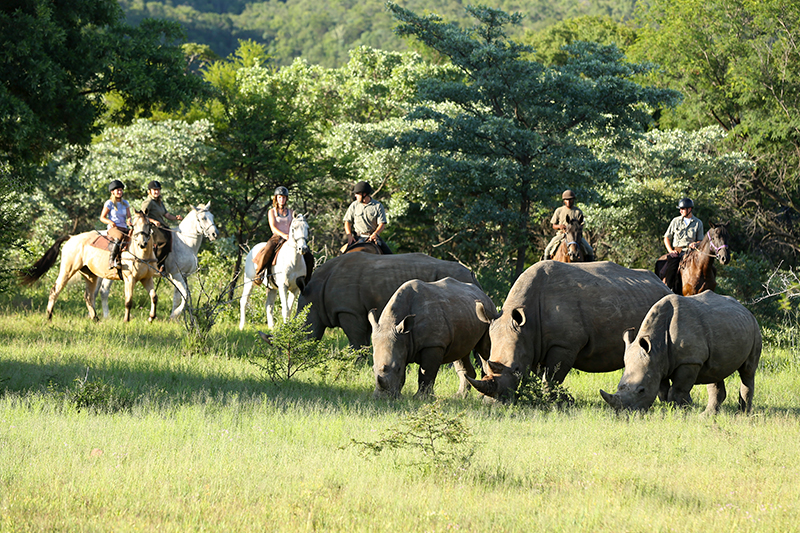
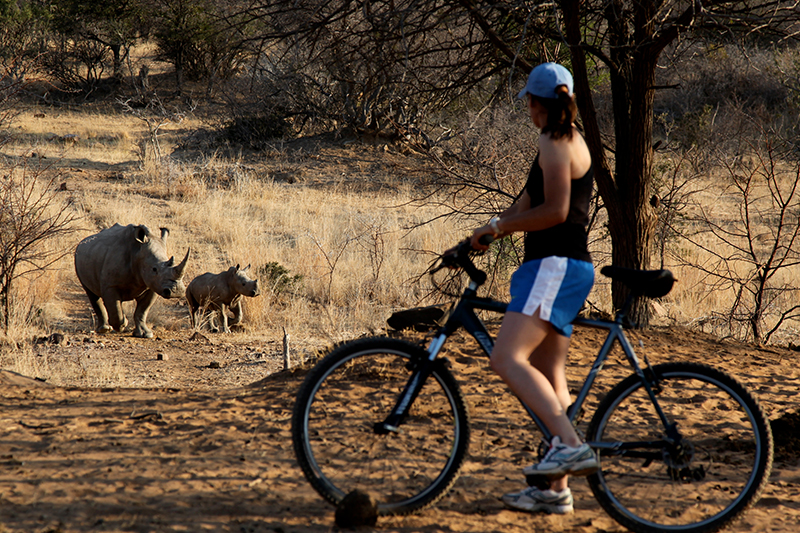
On the private Ant Africa Safaris ranch in the Waterberg region of South Africa, exploring on horseback is popular and the resident white rhino population can be approached comfortably. From Ant Africa Safaris you can also encounter wildlife on mountain bike safaris. Similar experiences on horseback are possible, but much less guaranteed, in Kenya.
If you wish to take things a step further, there are limited options to get involved in rhino conservation as part of your holiday. A stay at Marataba Camps, located in South Africa’s Waterberg region, has a strong conservation focus with guests being encouraged to participate in wildlife monitoring and identification. For a more immersive conservation experience, Marataba also offers a dedicated three-day rhino conservation safari during which guests can be involved in darting, notching and monitoring.
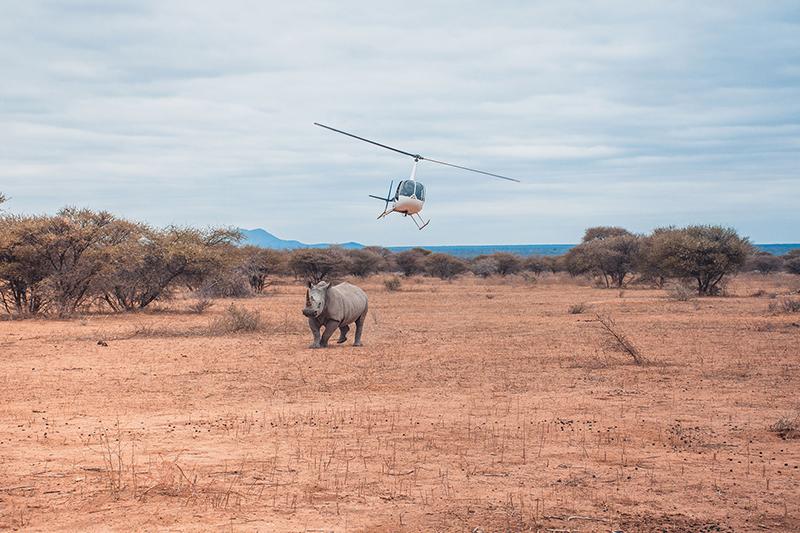
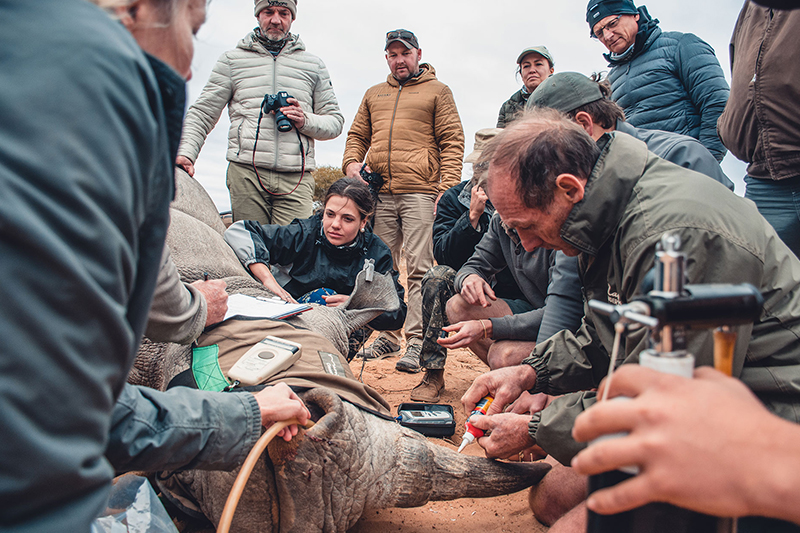
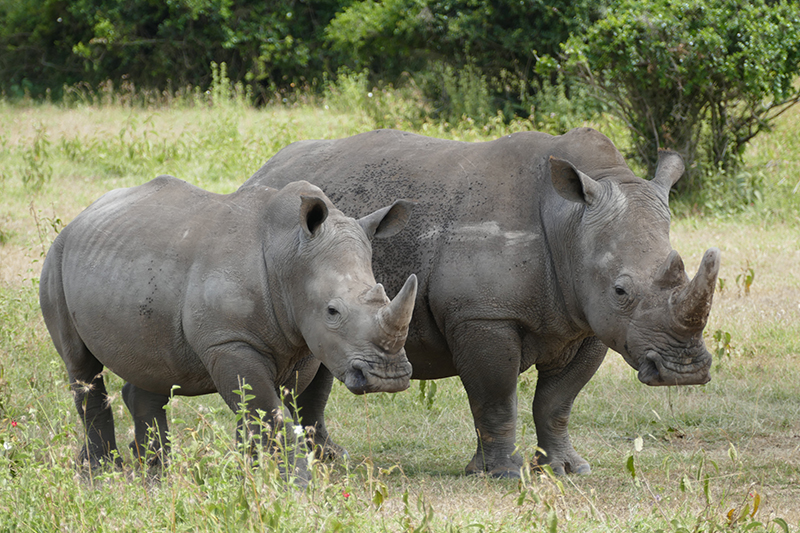
However you choose to incorporate them into your safari, encounters with black or white rhino are humbling and potentially emotional experiences. The poaching that continues today is both sad and unnecessary, and the only way to protect our rhino is to value them as an asset and an attraction. By visiting areas and camps that invest in rhino conservation and protection, you will be directly contributing to safeguarding the future of these magnificent creatures.
With thanks for images to Dana Allen, Wilderness Safaris (courtesy of Dana Allen), Ant Africa Safaris and Marataba Camps.
